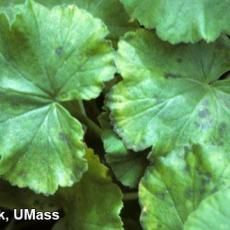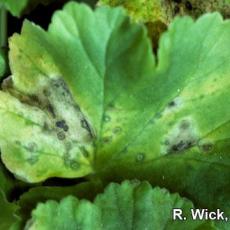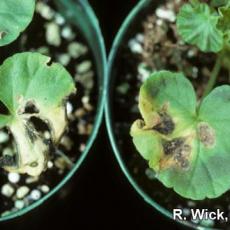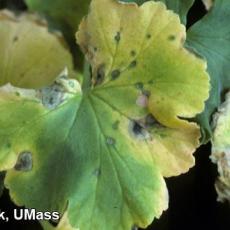Bacterial leaf spot caused by P. syringae can easily be confused with Xanthomonas Blight, except that affected leaves don't wilt and remain attached to the plant. Pathovars (different strains with different hosts and virulence) of P. syringae have an extremely wide host range including woody species, vegetables, grasses, and herbaceous perennials. P.s. pv. syringae is most important in potted ornamentals. Sources of infection include seed, infected cuttings, and infected plantlets. Disease development is favored by high relative humidity, extended periods of leaf wetness, and high nitrogen levels. Sanitation is the most important disease management principle. Remove and destroy affected plants and infected plant debris. Bacteria are easily spread by water splashing; minimize splashing and reduce leaf wetness duration by irrigating early in the day or subirrigating. Do not handle plants when foliage is wet. Copper products are registered for control, but bactericides are only marginally effective. Sanitation and environmental control are extremely important.
See fact sheet: Bacterial Diseases of Geraniums






